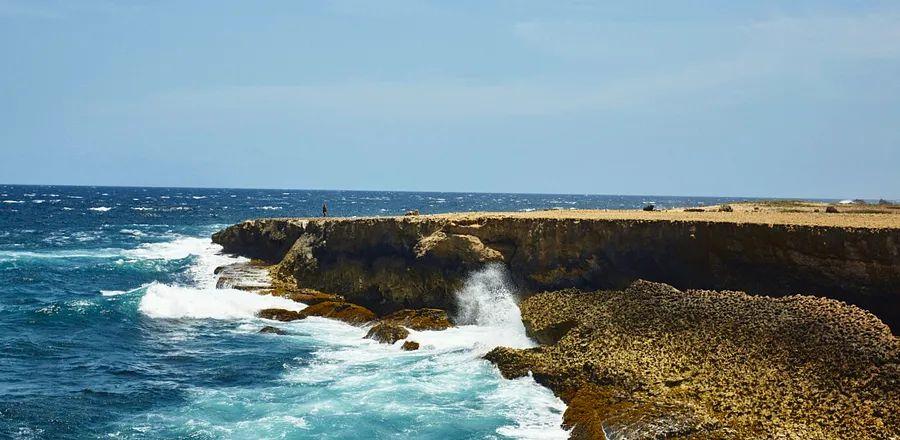How to Explore Beyond the Tourist Hotspots in the Caribbean

The Caribbean is a sought-after destination, attracting over 28 million visitors in 2022. This popularity means that popular locations can be quite crowded. However, there are ways to enjoy your visit without the hustle and bustle. By making the right choices, you can escape the usual tourist traps in the Caribbean and immerse yourself in local culture, discover hidden gems, and enjoy more meaningful travel experiences. Consider visiting a lesser-known island, exploring the inland areas away from the beaches, or supporting community-run businesses. Here are some suggestions to enhance your journey.
Discover Hidden Gem Islands
Instead of sticking to the well-known Caribbean giants, why not choose a more obscure Caribbean island? The tiny volcanic island of Saba, for instance, spans just five square miles and is home to fewer than 2,000 residents. It boasts some of the finest diving locations in the region (don’t miss the coral-clad Eye of the Needle), along with delightful accommodations like the Cottage Club, featuring 10 charming gingerbread-style bungalows, gardens filled with frangipani, and stunning sea views.

Image courtesy of Secret Bay
Travel influencer Sarah Greaves-Gabbadon, also known as JetSetSarah, is well-versed in the Caribbean and recommends two stunning destinations: the lush island of Dominica and the charming Bequia, part of St. Vincent and the Grenadines.
“Dominica is known as the ‘Nature Island,’ and it truly lives up to that name,” she shares. “It’s pristine, with mountains, hiking trails, exceptional scuba diving, and breathtaking waterfalls—it’s unlike any other island.” She suggests staying at Secret Bay, where the villa suites provide beautiful water views. On the other hand, Bequia “resembles the Caribbean of the 1960s James Bond films, featuring a single waterfront main street and local women shopping with straw baskets.” For Bequia, her preferred accommodation is Bequia Beach Hotel, located on the picturesque crescent-shaped Friendship Bay.

Photo credit: Peter “Pedro” Thomas
Explore Alternatives to Popular Attractions
In Jamaica, tourists flock to Dunn’s River Falls for a waterfall climbing experience. However, savvy travelers opt for Benta River Falls, a hidden gem located just nine miles from Negril. This eco-friendly destination maintains its natural vegetation, allowing you to enjoy the falls and a natural whirlpool without the hassle of long lines.
Another well-known Caribbean site is Stingray City in the Cayman Islands, where visitors can swim with rays in shallow waters. Unfortunately, the frequent human interactions here have altered the rays' natural behavior. For a more ethical and less crowded experience, consider the Central Caribbean Marine Institute on Little Cayman, which offers purpose-driven diving trips that enable visitors to assist research teams in citizen science projects aimed at ocean conservation for future generations.
When visiting Turks and Caicos, many travelers head straight to Providenciales, but this archipelago offers much more. Consider exploring North and Middle Caicos instead. “They are tranquil, featuring untouched beaches and minimal crowds,” Greaves-Gabbadon explains. “You can either take a day trip or stay overnight at Pelican Beach Hotel on North Caicos or Dragon Cay Resort on Middle Caicos.”
In Barbados, most visitors stick to the sandy shores of the Gold Coast. However, Nicolas Alleyne, CEO of Blu Isles, a luxury boutique travel agency, suggests venturing to the rugged coast of Bathsheba on the island’s Atlantic side. “It’s rustic, rural, and untouched, boasting stunning rock formations,” he remarks. “Be sure to have lunch at Zemi Café, located in the new community center. The food is exceptional, and they actively support the local community.”

Photos by Michelle Heimerman
Venture Beyond the Shore
The Caribbean is famous for its stunning beaches, but if you venture inland, you’ll discover a different kind of natural beauty. While Antigua is known for its 365 beaches—one for each day of the year—consider swapping the vibrant blues of the coastline for the lush, dark greens of Wallings Nature Reserve. Here, you can hike along well-marked trails or soar above the treetops with Antigua Rainforest Zipline Tours.
Two Caribbean islands feature caves adorned with ancient rock art. In the heart of the Dominican Republic lies Los Haitises National Park, covering an impressive 618 square miles. Explora Ecotour offers boat tours through the park's mangrove forests, showcasing limestone karst formations and petroglyphs created by the indigenous Taino people. Meanwhile, on Aruba, you can navigate Arikok National Park in a Jeep with De Palm Tours Aruba, where you can explore decorated caves and striking landforms made of lava, quartz diorite, and limestone.
Podcaster, YouTuber, and travel coach Riselle Celestina of the Traveling Island Girl advises that there’s little left unexplored on French St. Martin, so she suggests hiking as an alternative. “The island is quite hilly, offering numerous trails to explore,” she notes. “Make your way to Paradise Peak, the highest point on the island for breathtaking views.”

Image courtesy of the U.S. Virgin Islands Department of Tourism
Arrange a tour with a local guide
Enhance your Caribbean adventure by teaming up with knowledgeable local guides who can help you navigate away from the crowds.
On Anguilla, Shellecia Brooks-Johnson—writer, marketer, and owner of the lifestyle site My Anguilla Experience—highlights a new island-based tour company named Quest Experiences, established by Clemvio Hodge, whose father launched the magazine What We Do in Anguilla. “They offer unique experiences such as salt picking, johnny cake making, rum tastings, and coastal hikes,” Brooks-Johnson shares. Influencer Gabrielle Querrard, an ancestral Virgin Islander, has garnered a following for her fresh perspective on local history. To enhance a visit to St. Thomas, she directs travelers to the St. Thomas Historical Trust. “They conduct walking tours of downtown Charlotte Amalie, the oldest town in the Virgin Islands,” she explains. “They also offer tours of Hassel Island, a neighboring island rich in World War II history and even tales of ghost sightings.”
Consider Boutique Accommodations
While the Caribbean features its share of large, glamorous resorts, a great way to maintain authenticity is to choose smaller hotels that reflect the unique character of each island. For example, Montpelier Plantation & Beach on Nevis has been family-owned for four generations. It’s situated around a former 18th-century sugar plantation and houses a restaurant in a 300-year-old windmill.
In San Juan, Puerto Rico, the charming 19-room Dreamcatcher is operated by Dreamers Welcome, an LGBTQIA-owned hospitality group co-founded by a Puerto Rican artist. Just a short walk from the beach, this eclectic property features a stylish mix of hammocks, antiques, stained-glass doors, and open-air showers, and proudly claims to be the only vegetarian hotel in San Juan.
One of Celestina’s top hidden gems on Dutch St. Maarten is Pasture Piece, a B&B that dates back to the 1800s, offering one well-appointed room and a small museum. “It carries a rich family history—the owner’s grandparents acquired it from the landowners shortly after slavery ended,” she explains. “It’s a unique offering.” For those seeking smaller accommodations in St. Lucia, explore Collection de Pepites, which showcases unique options, including local B&Bs, villas, and boutique hotels with 35 rooms or fewer—such as Stonefield Villa Resort, featuring 17 French colonial-style rooms with views of the Pitons.
Skip the Resort Buffet
By dining at locally-owned restaurants, you’ll not only enjoy delicious meals but also make a meaningful contribution to the local community. On the southern tip of Little Exuma Island in the Bahamas, you can discover a family-run trio of seaside establishments. Matriarch Mary Doris Rolle operates Mommy’s Bakery with her daughter Maisie, famous for their cherry pie, pineapple pie, and the beloved rum cake. Nearby, daughter Denise runs Santanna’s, serving fresh-caught lobster grilled to perfection. At Club Arawak, daughter Cassandra is known for crafting the best conch fritters on the island.
In the British Virgin Islands, Jost Van Dyke is famous for its casual beach bars, but Hendo’s Hideout elevates the experience with gourmet offerings like chorizo-stuffed chicken and sushi made from fish caught by owner Ehren Henderson himself, an enthusiastic spearfisherman. This restaurant is situated on 15 acres of pristine beach, a vision realized by Henderson’s grandmother, who purchased the land back in the 1950s.
For home-cooked meals in St. Lucia, the waterfront Coal Pot restaurant is a top choice. “It’s owned by a local woman who is also an artist, creating a charming spot for lunch and dinner,” notes Cybelle Brown, managing director of Stonefield Villa Resort. In the Cayman Islands, food expert Chelsea Tennant, who runs the Island Epicurean blog, recommends visiting the East End of Grand Cayman for Vivine’s Kitchen, where the owner serves dishes like stewed turtle, stewed conch, and Cayman-style beef. “This is one of the best places to experience Caymanian cuisine, and it’s a cozy eatery attached to her home,” she adds.

Courtesy of Bermuda Tourism Authority
Discover locally owned shops
In Caribbean-owned shops, you’ll find more than just goods; each item has the potential to connect you to the islands' rich culture and history. In Bermuda, the essence of local shopping is captured by Long Story Short, an eco-friendly boutique owned by Kristin White, a blogger and tour operator. Nestled in the historic 17th-century St. George’s, White describes it as “a truly magical part of Bermuda where you can spend hours meandering through the historic alleys.” The boutique features books authored by women of color, eco-conscious jewelry, skincare items from Salt Spray Soap Co. (which has an in-store workshop), and even bespoke Hula-Hoops.
In the U.S. Virgin Islands, Gabrielle Querrard champions local craftsmanship. On St. Croix, she recommends two unique jewelry shops: IB Designs, known for its pieces adorned with symbols of the indigenous Taino people, and Crucian Gold, which incorporates shards of historical pottery from the Danish era, known as chaney. “I appreciate businesses like these—the owners are Crucians, they hire Crucians, and everything has a narrative,” Querrard explains.
On the sister island of St. John, which is rapidly undergoing gentrification, you can experience traditional Virgin Islands culture at Bajo el Sol, a unique blend of a gallery, bookstore, café, and bar. “It showcases everything local,” Querrard shares, “from Caribbean history literature to artwork that tells the stories of the Virgin Islands people—both past and present, as well as future.”
Evaluation :
5/5



